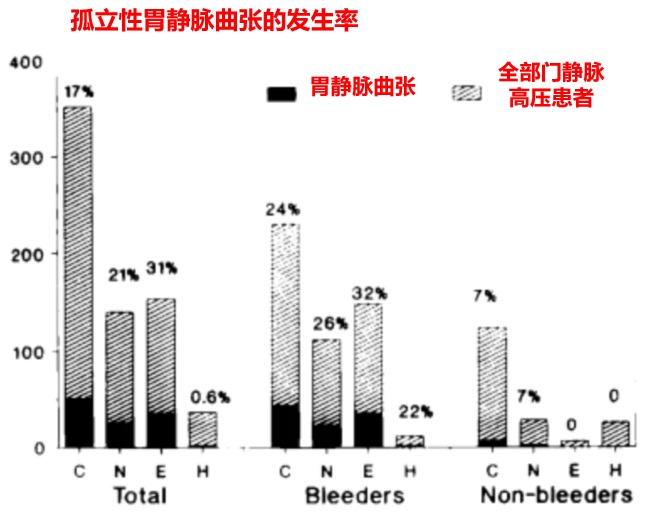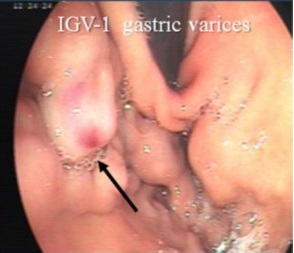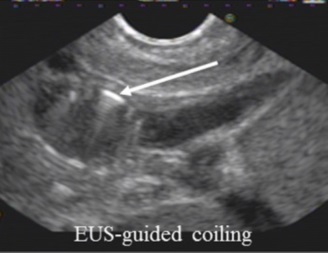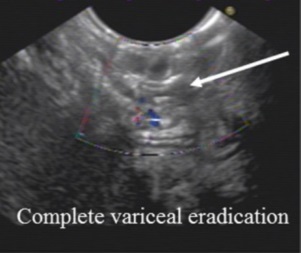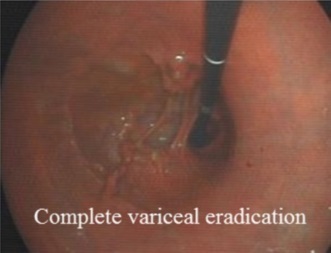已知孤立性胃静脉曲张存在于门静脉高压患者100多年【1】,然而只在过去20年才开始研究。很多问题依然未知。 1. 门静脉高压患者胃静脉曲张精确发生率 2. 几乎没有关于胃静脉曲张的自然病史信息。只知道出血率比食道静脉曲张少,但并发症和死亡率高 3. 胃静脉曲张出血来自有或没有食道静脉曲张的确切情况不清 主要由于相对较少的文献。 胃静脉曲张(gastric varices),或者说孤立性胃静脉曲张(isolated gastric varices),大约占肝硬化门静脉高压患者的5%和33%【2】。虽然他们出血的频率低于EV-仅占静脉出血的10%-30%,但出血往往很严重,输血要求较高【2】
S K Sarin 1, D Lahoti, S P Saxena, N S Murthy, U K Makwana Prevalence, classification and natural history of gastric varices: a long-term follow-up study in 568 portal hypertension patients. Hepatology . 1992 Dec;16(6):
GV通常与粗大胃肾分流(GRS)相关,具有“下坡”(downhill)引流,而不是通过半奇静脉系统“上坡(uphill)”引流【3】。 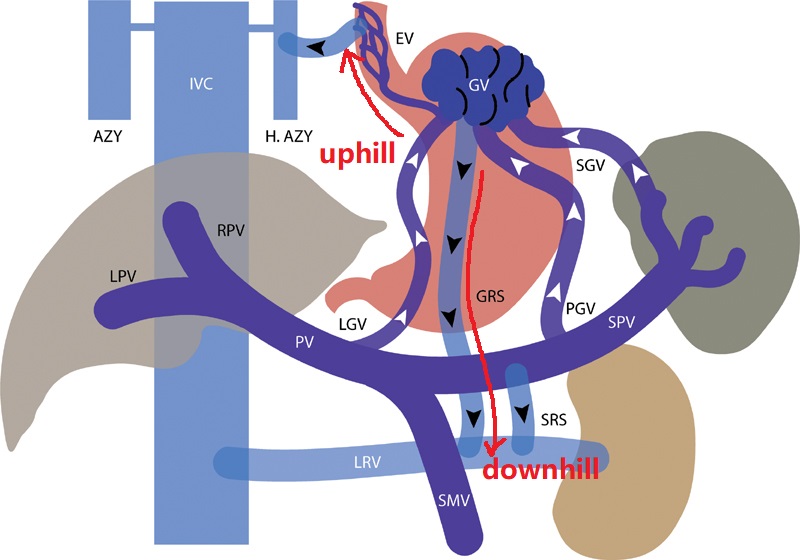
胃孤立性静脉曲张作为“低压、高容量”通道存在,并可能比食道静脉曲张压力低的情况出血【4,5】。
 因此,GV出血(GVH)的治疗需要一种与EV不同的治疗方法 都曾有哪些方法可供选择? 1. 根据美国肝病研究协会的说法,内镜治疗目前被认为是GV的一线治疗方法【6】。TIPS作为二线治疗。
2. 最近,内超声弹簧栓子和胶在处理GV的过程中显示出了良好的效果,但可能不足以满足那些与大门腔分流相关的效果【7】。
对于对药理学和内镜治疗没有反应的病例,建议进行经皮血管内治疗。虽然TIPS可在高达90%的急性GVH病例中建立初始止血,但仍未证明像食道静脉曲张出血那样有效【4,5,8】
GOV2和IGV1相关出血、早期再出血和复发性出血,死亡率高达20%【8】
Additionally, B-RTO is a proven therapy for patients with severe recurrent shunt-related HE, unresponsive to medical therapy[40,42].
此外,对药物治疗无反应的严重反复发作的分流相关HE患者,B-RTO是一种已证实的治疗方法。【40,42】
Thus, patients with spontaneous portosystemic shunts, who are at high risk of developing HE after TIPS can safely undergo B-RTO.
因此,发生自发性门系统分流的HE高风险患者,TIPS后可以安全地接受B-RTO。
However, occlusion of GRS can also aggravate the PH.
然而,GRS的闭塞也会加重PH。
Long term follow-up of patients undergoing B-RTO revealed development or aggravation of esophageal and duodenal varices, ascites, hydrothorax, and PHG【40】
对B-RTO患者的长期随访显示,食管和十二指肠静脉曲张、腹水、胸水和PHG的发展或加重。【40】
Prospective studies and meta-analysis comparing TIPS and B-RTO in the management of GV have found that B-RTO is at least as efficacious as TIPS in controlling the acute bleeding with a trend towards a lower incidence of rebleeding[43-46].
比较TIPS和B-RTO治疗GV的前瞻性研究和荟萃分析发现,B-RTO在控制急性出血方面至少与TIPS一样有效,再出血发生率较低【43-46】。
Of note, B-RTO was associated with lower post procedure HE and mortality at one year.
值得注意的是,B-RTO与术后较低的HE发生率和一年死亡率相关。
More recently, a combination of TIPS and B-RTO has been utilized for the management of GV【32】
最近,TIPS和B-RTO的组合(图(图2)2)已被用于GV的管理。【32】
Since the obliteration of GRS can lead to worsening of PH, simultaneous or staged placement of TIPS could ameliorate the associated symptoms.
由于GRS的消除可导致PH的恶化,同时或分期放置TIPS可以改善相关症状。(究竟是同时还是分期好呢?)
The combined procedure can also reduce the risk of development of HE since GRS are often larger in diameter and have higher flow rates compared to TIPS.
联合手术也可以降低HE发生的风险,比较TIPS分流通道,GRS通常直径更大,也可以降低更高的流率。
Moreover, occluding a competing GRS (shunt steal phenomenon) may decrease the risk of TIPS dysfunction in the long run.
此外,从长远来看,闭塞相互竞争的GRS(分流偷窃现象)可能会降低TIPS功能障碍的风险。
Typically, TIPS is performed first, and a splenoportal venogram is obtained.
通常,首先进行TIPS,并获得脾门静脉造影。
The GRS is cannulated retrogradely, and suitable sized coils or vascular plug deployed.
GRS是逆行插管的,并部署合适大小的弹簧栓子或血管塞。
The inflow vein is then occluded with a balloon and sclerosant injected into the variceal complex to achieve complete obliteration.
然后用一个球囊闭塞流入的静脉,并将硬化剂注射到静脉曲张中,以实现完全闭塞。
Conversely, doing B-RTO first may make TIPS less technically challenging in cases where the portal vein is severely attenuated due to the siphoning of blood away from the liver by the large GRS.
相反,在门静脉由于大GRS虹吸血液远离肝脏而严重减弱的情况下,首先做B-RTO可能会使TIPS降低技术挑战性。
These tiny portal veins can be difficult to target during TIPS.
这些微小的门静脉在TIPS期间很难靶向。
Following B-RTO, due to the diversion of blood towards the liver, portal vein caliber may improve, making it easier to access.
在B-RTO后,由于血液转移到肝脏,门静脉口径可能会改善,使其更容易进入。
A proposed algorithm for the management of GVH is shown in Figure Figure33.
所提出的GVH管理算法如图图33所示。
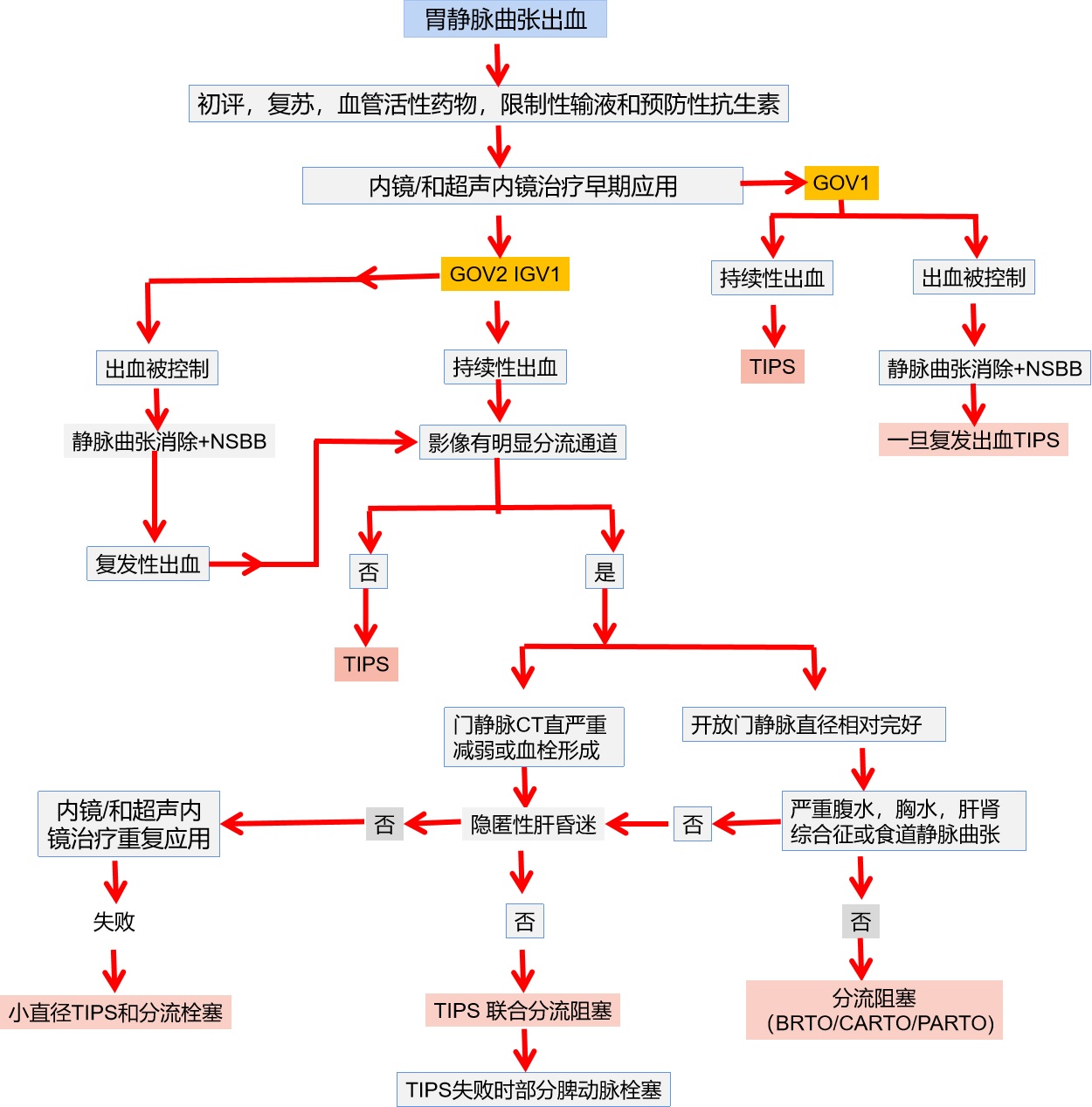 1. Stadelmann E. Uber seltene Formell von Blutungen im 'rractus gastrointestinalis. Berlin Klin Wochnachr 1913;SO 825813. 2. Sarin SK, Lahoti D, Saxena SP, Murthy NS, Makwana UK. Prevalence, classification and natural history of gastric varices: a long-term follow-up study in 568 portal hypertension patients. Hepatology. 1992;16:1343–1349. 3. Lipnik AJ, Pandhi MB, Khabbaz RC, Gaba RC. Endovascular Treatment for Variceal Hemorrhage: TIPS, BRTO, and Combined Approaches. Semin Intervent Radiol. 2018;35:169–184. 4. Morrison JD, Mendoza-Elias N, Lipnik AJ, Lokken RP, Bui JT, Ray CE, Jr, Gaba RC. Gastric Varices Bleed at Lower Portosystemic Pressure Gradients than Esophageal Varices. J Vasc Interv Radiol. 2018;29:636–641 5. Tripathi D, Stanley AJ, Hayes PC, Travis S, Armstrong MJ, Tsochatzis EA, Rowe IA, Roslund N, Ireland H, Lomax M, Leithead JA, Mehrzad H, Aspinall RJ, McDonagh J, Patch D. Transjugular intrahepatic portosystemic stent-shunt in the management of portal hypertension. Gut. 2020;69:1173–1192. 英国指南 6. Garcia‐Tsao G, Sanyal AJ, Grace ND, Carey W; Practice Guidelines Committee of the American Association for the Study of Liver Diseases; Practice Parameters Committee of the American College of Gastroenterology . Prevention and management of gastroesophageal varices and variceal hemorrhage in cirrhosis. Hepatology 2007;46:922‐938
7. Khoury T, Massarwa M, Daher S, Benson AA, Hazou W, Israeli E, Jacob H, Epstein J, Safadi R. Endoscopic Ultrasound-Guided Angiotherapy for Gastric Varices: A Single Center Experience. Hepatol Commun. 2019;3:207–212
8. Saad WE, Darcy MD. Transjugular Intrahepatic Portosystemic Shunt (TIPS) vs Balloon-occluded Retrograde Transvenous Obliteration (BRTO) for the Management of Gastric Varices. Semin Intervent Radiol. 2011;28:339–349. |


